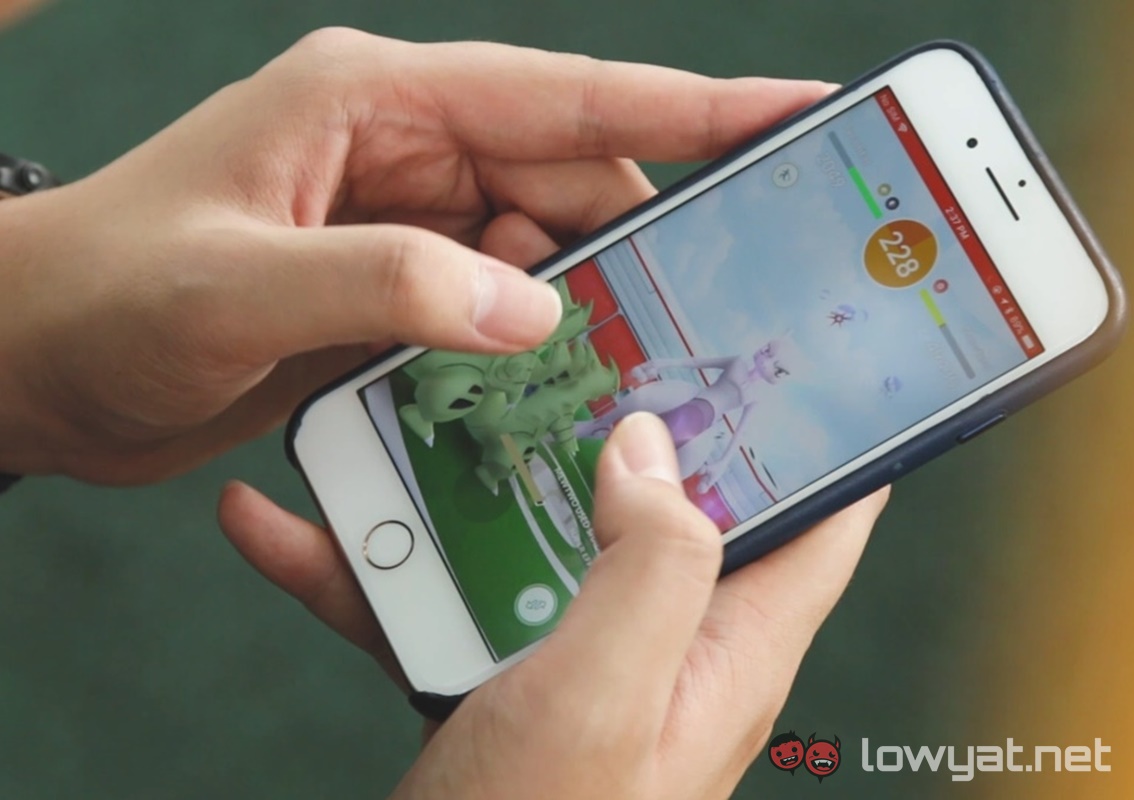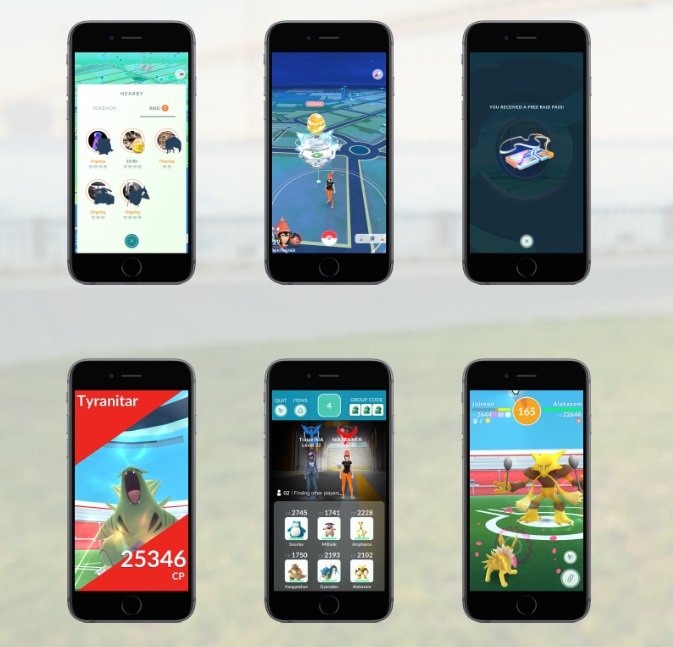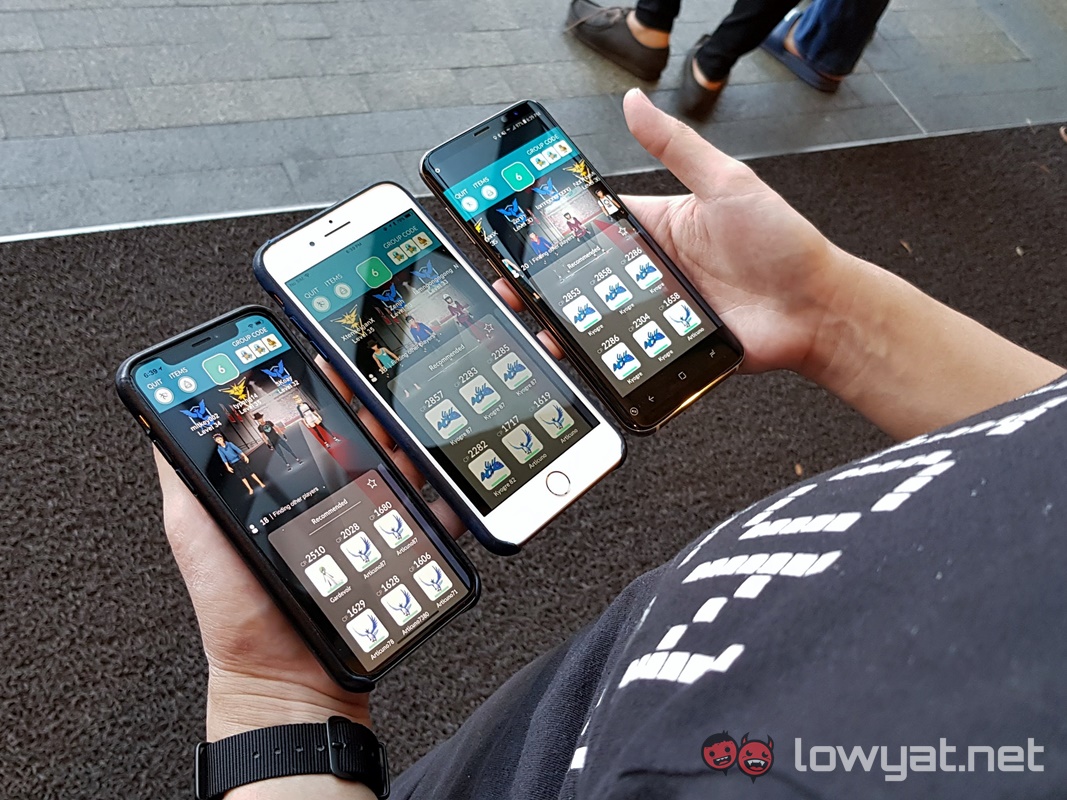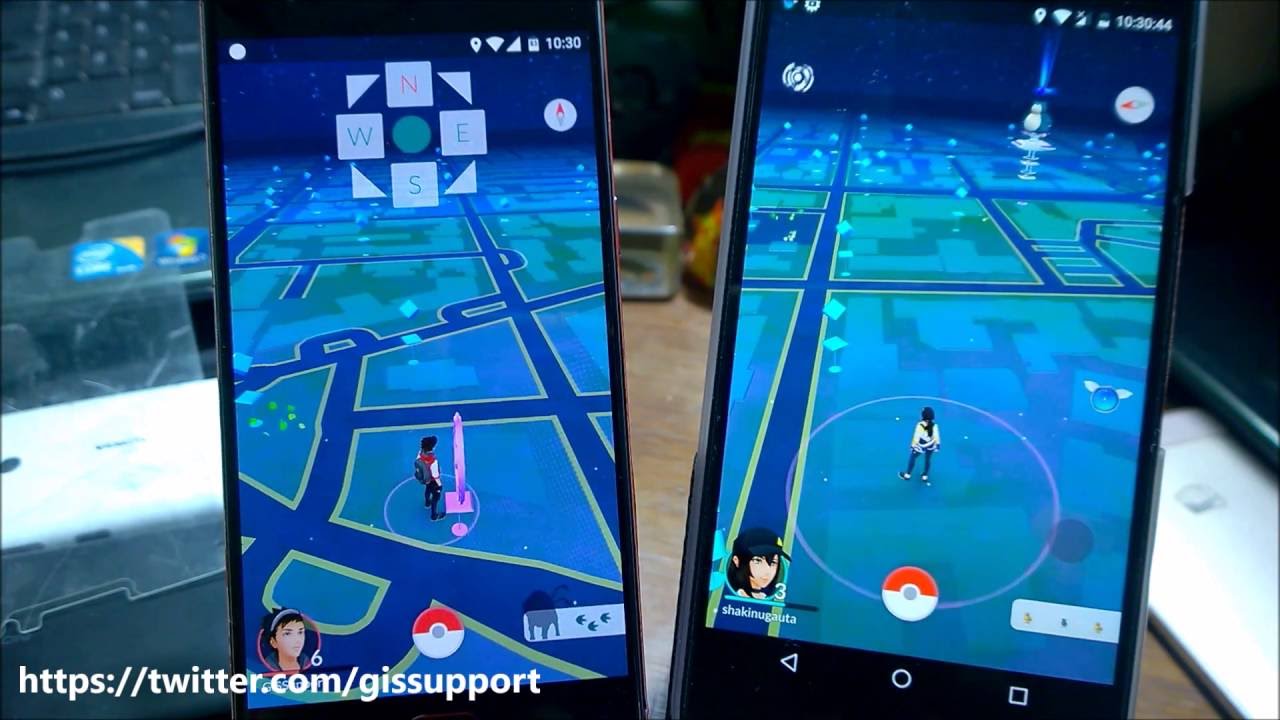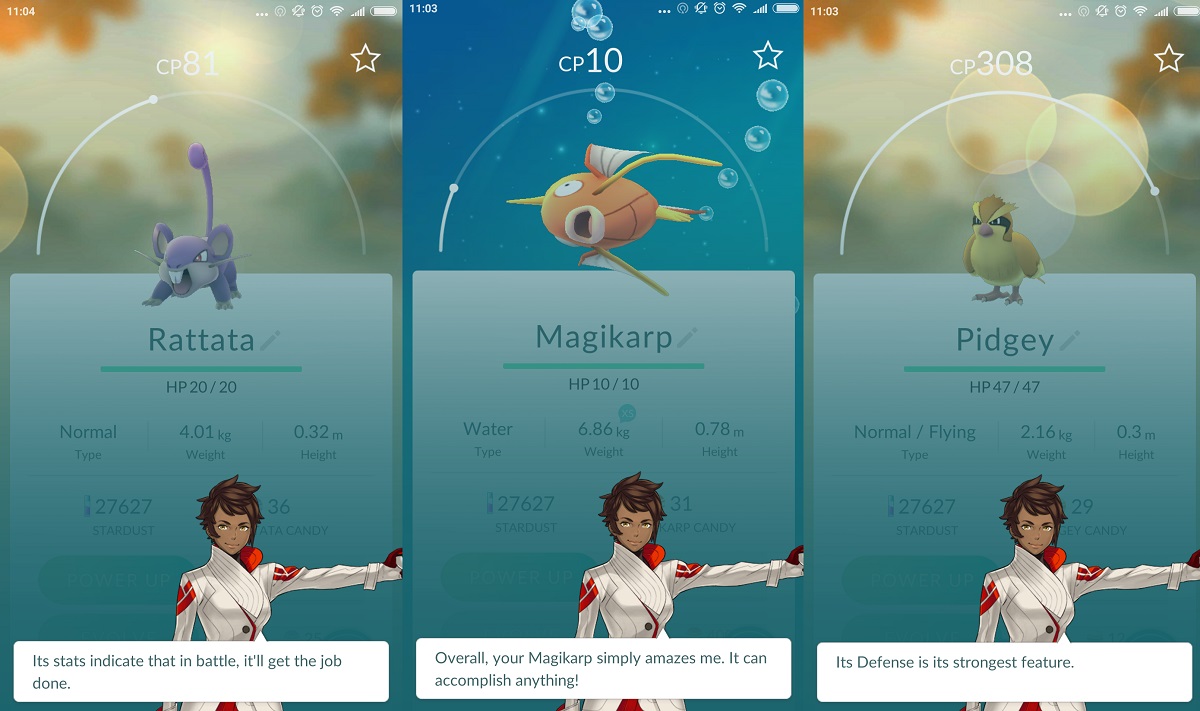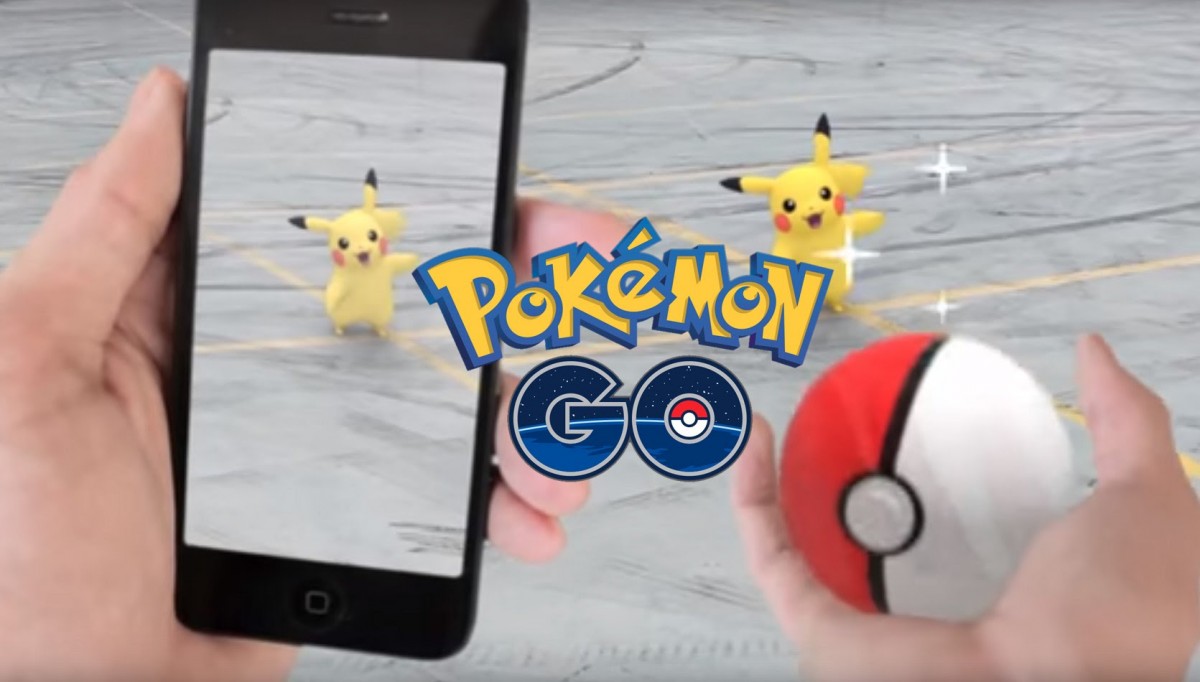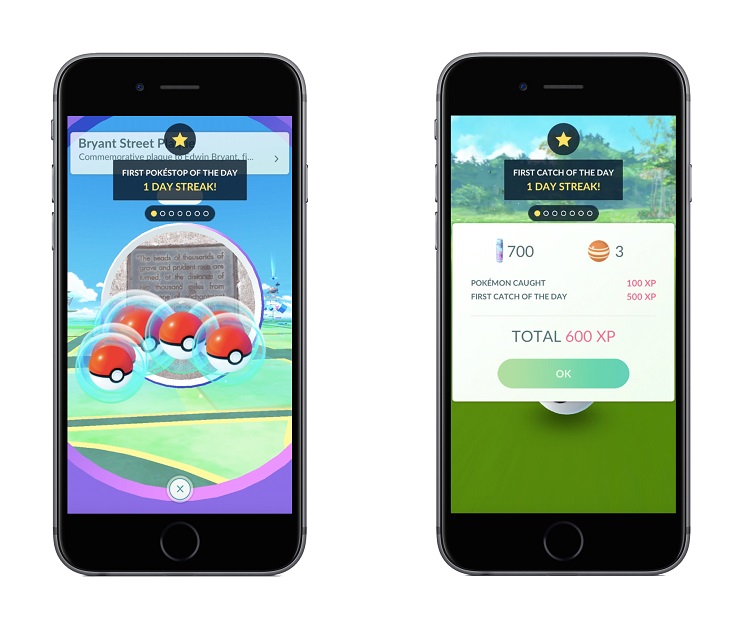It is now 18 months to the day Pokemon Go was released in Malaysia. It’s seen some heady days – and some strong criticism – but it looks like this game is growing up just fine. It may have lost tens of millions of active users, but developers Niantic has weaved in a number of fresh features that was sorely lacking in the game’s early days.
I mentioned a few glaring issues with Pokemon GO within two weeks of the game’s release in Malaysia, and to be fair, Niantic has slowly been improving the game with new features to keep the game fresh – while maintaining a steady stream of revenue via in-app purchases.
Introduction of Raids
After the initial hype, Niantic was facing a major crisis. Pokemon Go was bleeding users – from the initial 100 million active users down to “just” 65 million, the developer was in a race to find a solution to the increasingly mundane gameplay – and fix its gym problem.
The gym revamp as well as the introduction of gym raids in June last year are two of the most important additions to the game. In one stroke, Niantic added a sorely-needed social element to the game and rebalanced the frustrating gym defending issue. It took Niantic quite a while, but the new 6-Pokemon gym with CP decay finally ensured every Trainer had a chance to earn PokeCoins. It isn’t perfect, and it has its own set of issues, but it definitely is an improvement we can all live with.
But it’s the introduction of raids that got players coming back. Here was a way for new Trainers to catch up to experienced Trainers by giving them a chance to battle – and then capture – a various high-level rare Pokemon like Tyranitar, Snorlax, and many more without hunting for them in the wild. Niantic also introduced Legendary Pokemon as Raid bosses, where they are only available in the game as Raid bosses for a specific time frame. Each Legendary are great attackers, which makes them very useful additions to every Trainer.
More importantly, it also enticed those who stopped playing – myself included – to pick up the game once again. The element of luck (of finding that rare Pokemon spawn) was eradicated, and high level raids are usually popular to bring many Trainers to head over and take the raid boss down. The generous rewards (huge XP, as well as various in-game items) are sometimes enough of a reason to go for a gym raid.
For Niantic, this was a masterstroke. Gym raids require a Raid Pass, which is given out for free once a day, after which Trainers can purchase Premium Raid Passes to continue raiding. At 100 PokeCoins (RM1.90), it gives Niantic a new stream of revenue from Trainers.
And then it introduced Mewtwo as an invite-only Legendary Boss Raid.
The Mewtwo Effect
Arguably the best Pokemon in the game, Mewtwo is available via an invite-only gym raid. Known as an EX Raid, Trainers need to “qualify” for an invite, with the criteria of successfully defeating a raid boss at specific gyms. Trainers need to only successfully raid once to qualify, but since the invite algorithms are relatively unknown, many hardcore Trainers end up vigorously raiding at gyms known to give out EX Raid invites in the hopes of increasing their chances of getting an invite.
Having Mewtwo in a Trainer’s arsenal isn’t game-changing, but it is appealing for many sets of Pokemon Go players. For completionists who wish to unlock all Pokemon in their Pokedex. Mewtwo is a must-have. For high-level Trainers, it means amassing an army of strong attackers.
As a result, you’ll see many people in parks or playgrounds on weekends, camping nearby known EX Raid gyms while waiting for a raid boss to appear. It is definitely a grind, resulting in many frustrated Trainers when they don’t receive the invite.
The EX Raid system remains a prickly issue, especially when high-level Trainers do not receive the invite while new Trainers who do not put in as much effort gets them.
Those who do get invited are an increasingly large group of Trainers. EX Raids, naturally, are an exciting affair. Since EX Raids take place at specific gyms at a specific time, these raids become a proper event for invited Trainers. I got to experience it for myself recently at two separate EX Raids in Subang and Petaling Jaya:

The social element
Pokemon Go’s Gym Raids finally introduced a social element to the game that was designed to get people out and about. It isn’t the most-demanded social feature – player-versus-player (PvP) and trading remain a strong request among high-level Trainers – but until Niantic finds a balance for that, we won’t be seeing the feature implemented.
What Gym Raids has done is to add a new dimension to a game whose gameplay was becoming increasingly mundane. Chat groups began sprouting, as players who live or work at a specific location decide it’s a better idea to share information on upcoming raids (or rare spawns) to ensure there are enough Trainers to successfully defeat the raid boss. These chat groups are usually very lively, and consist of a mix of high-level and casual Trainers. There is also a Pokemon Go Malaysia group page on Facebook, with 65000 members.
At EX Raids, it quickly becomes apparent that these chat groups have become Pokemon Go communities of their own. They see each other at raids so often that Pokemon Go becomes a binding factor for these players, who are from all walks of life – it is safe to say that these Trainers would not have been friends if it weren’t for this game. Few games can accomplish this level of community, but Pokemon Go definitely has achieved something special.
Spoofing remains an issue
That being said, Niantic still has a big issue to address in Pokemon Go. Spoofers – Trainers who use GPS-spoofing apps to easily move around in the game without actually moving anywhere in real life – remain a frustrating pain point for Pokemon Go. It is a cat-and-mouse game for Niantic and spoofers – when one spoofing identifier gets fixed, another workaround pops up.
Niantic tried shaming spoofers, but that didn’t work. It also issued soft bans where spoofers can only see common Pokemon spawns, but it is merely an irritant. Spoofers themselves are also smarter, moving around within the parameters set by the game (there is a maximum movement limit for a period of time before the Trainer is flagged by the game system).
Spoofers take away the joy of the game for legitimate players. Those who have gotten away with spoofing can easily amass thousands of PokeCoins in the early gym system, and while the new gym system is an improvement, spoofers need only locate rural gyms to continue farming for coins – the CP decay in the new gym system almost guarantees someone will take the gym down eventually.
The PokeCoin advantage is one thing, it’s the list of “perfect” Pokemon spoofers have that really breaks the game for legitimate players. With the variety of Pokemon scanning apps and websites around (which itself is a grey area between what’s fair and what’s cheating), spoofers need only obtain the GPS coordinates to 100% IV Pokemon (each Pokemon spawns with a random Individual Value (IV) score, which determines how strong or weak it is), “fly” to the location, catch it, and simply power it up. These Pokemon are stronger and more difficult to defeat in gyms, which adds another layer of difficulty to legitimate players who grind to get even one decent Pokemon.
Raids help alleviate the situation to a certain extent, but spoofers can raid too, using the hoard of PokeCoins they have.
Cheaters will forever be a game developer’s most difficult challenge, and it looks likely that spoofing will be a pain point in the game for the foreseeable future.
The future of Pokemon Go
Nevertheless, Niantic has proven that it is still working hard to improve the game overall. The raids are a great addition, and the recent introduction of weather effects coinciding with the release of Generation 3 Pokemon are yet another demonstration of the developers’ commitment.
Weather effects boost specific Pokemon Types in different weather. Rainy weather increases the spawn rate – and stronger – Water-type Pokemon, for example. This makes it a lot easier to farm for different types of Pokemon, as well as the chances of encountering high IV Pokemon. Raid Bosses are also affected by weather, which makes raiding a weather boosted Legendary Pokemon all the more rewarding.
Once again, this move clearly makes it easier for casual, low-level, and returning Trainers to catch up to high-level Trainers. Niantic is pulling all the stops to ensure players are actively engaged in the game.
But it is an upcoming feature that will surely reinvigorate the game once again.
In a datamine for the latest version of Pokemon Go, there are hints of a revamp in daily bonuses for active Trainers. Currently, Trainers who spin at least one PokeStop and catch at least one Pokemon get daily spin and catch bonuses, which gets rewarding over time – the 7th day bonus offers a huge amount of XP, stardust, and item rewards.
It appears Niantic is looking to add on to this bonuses with an upcoming Quests feature. The datamine hints at daily quests, which may involve easy to complete tasks to earn bonuses, as well as longer-term quests that require Trainers to pass a certain condition. This element borrows heavily from other mobile games to ensure players keep coming back, and adds another layer of purpose to the game – and then be rewarded for it.
At a time when Raids are slowly becoming repetitive, this is definitely welcome news. The introduction of Quests is genuinely exciting, depending on how Niantic implements it. Completing quests and challenges that adequately rewards Trainers is a huge breath of fresh air, and almost guarantees greater engagement from players.
It certainly looks like Pokemon Go isn’t quite as dead as many people think.
Follow us on Instagram, Facebook, Twitter or Telegram for more updates and breaking news.


